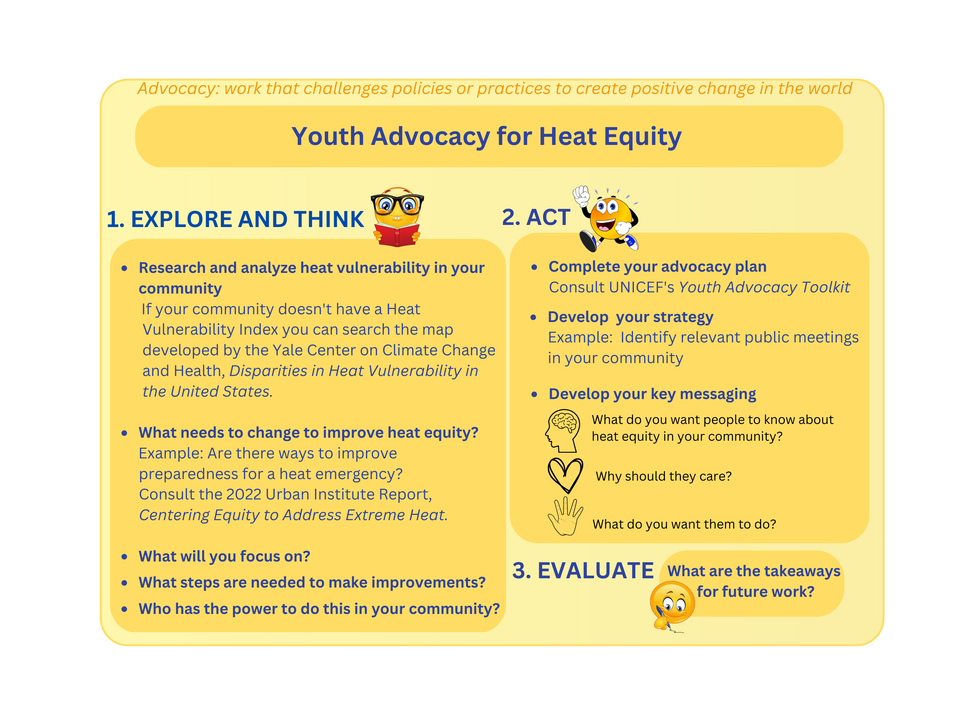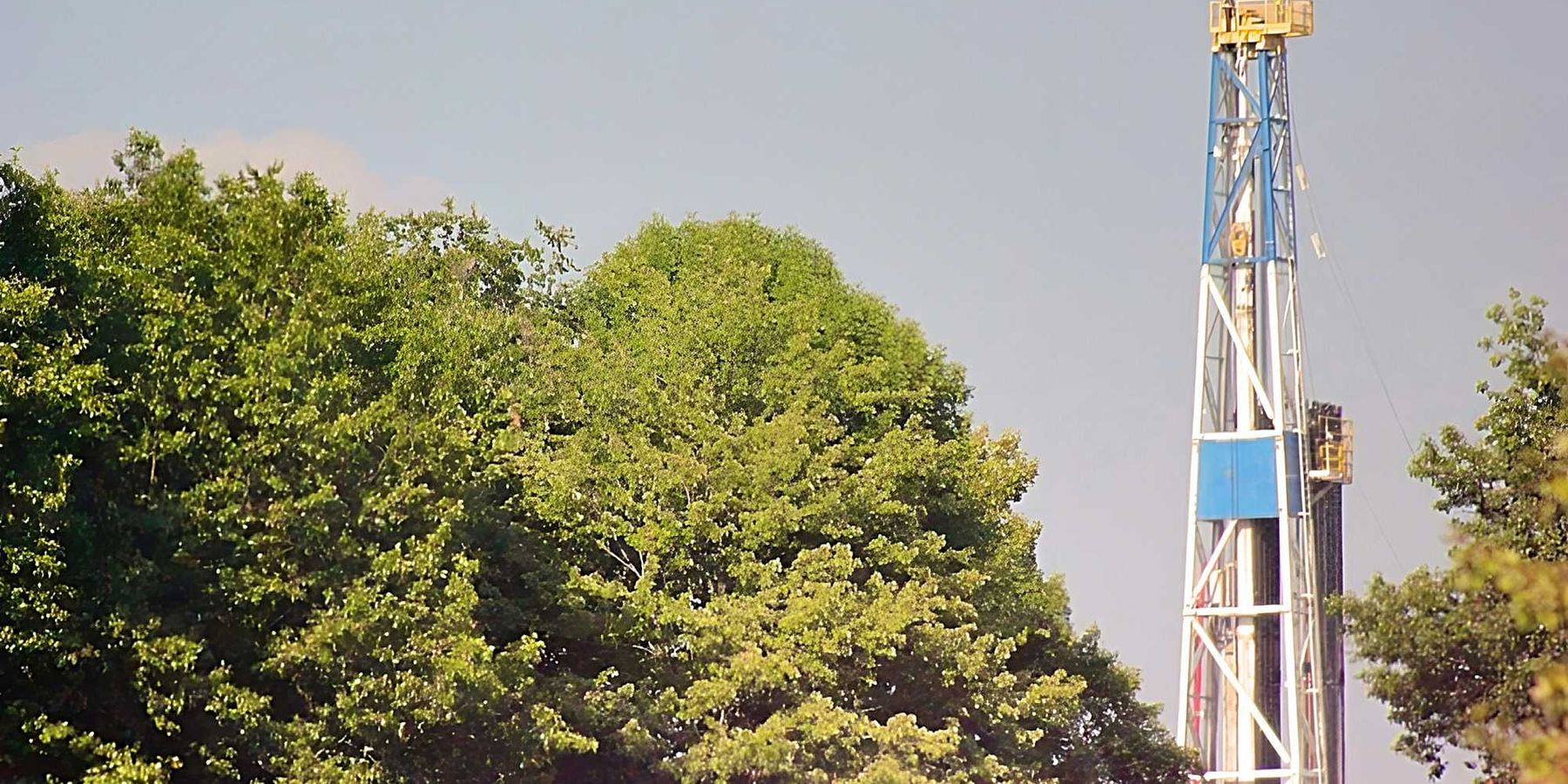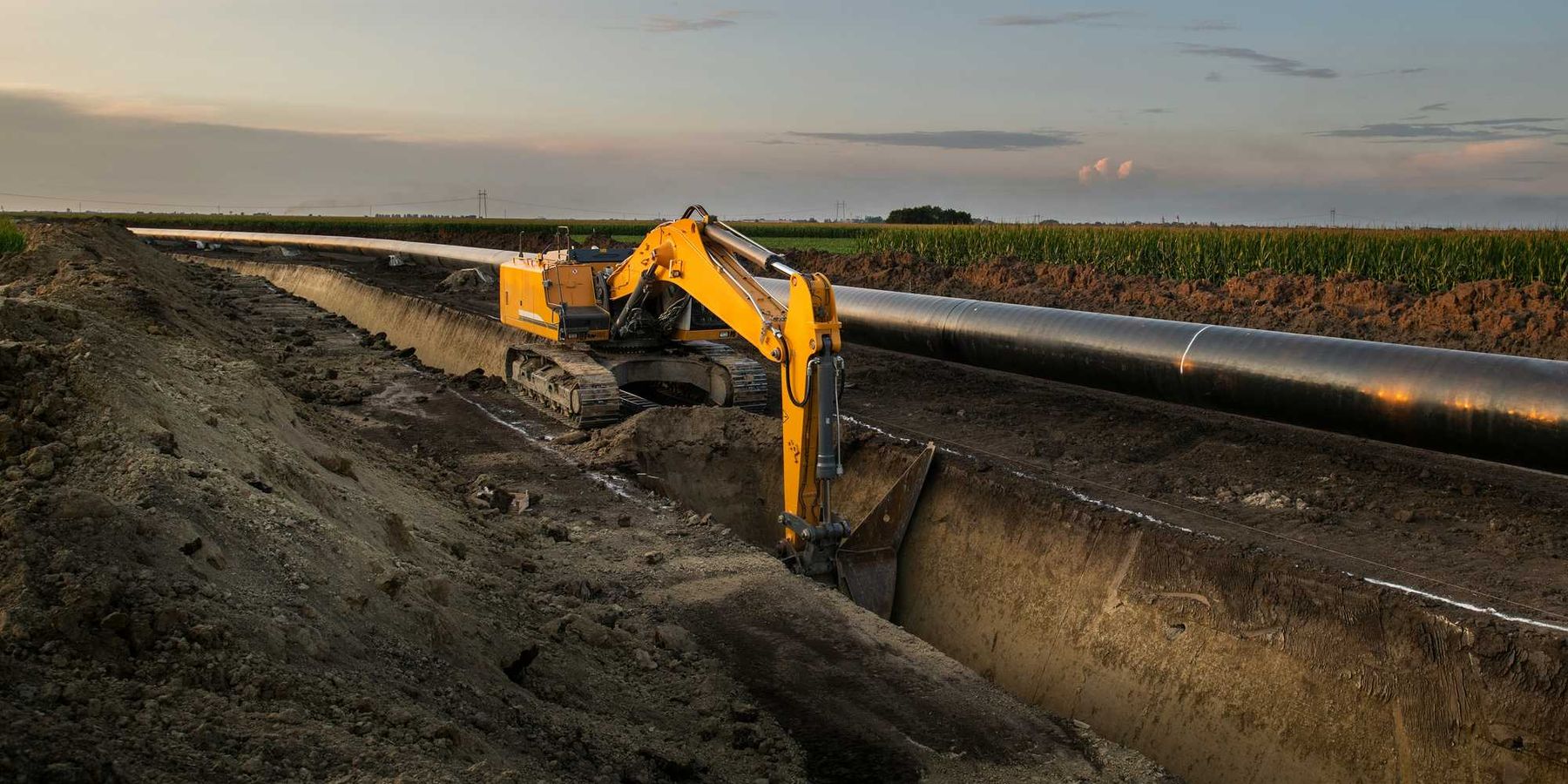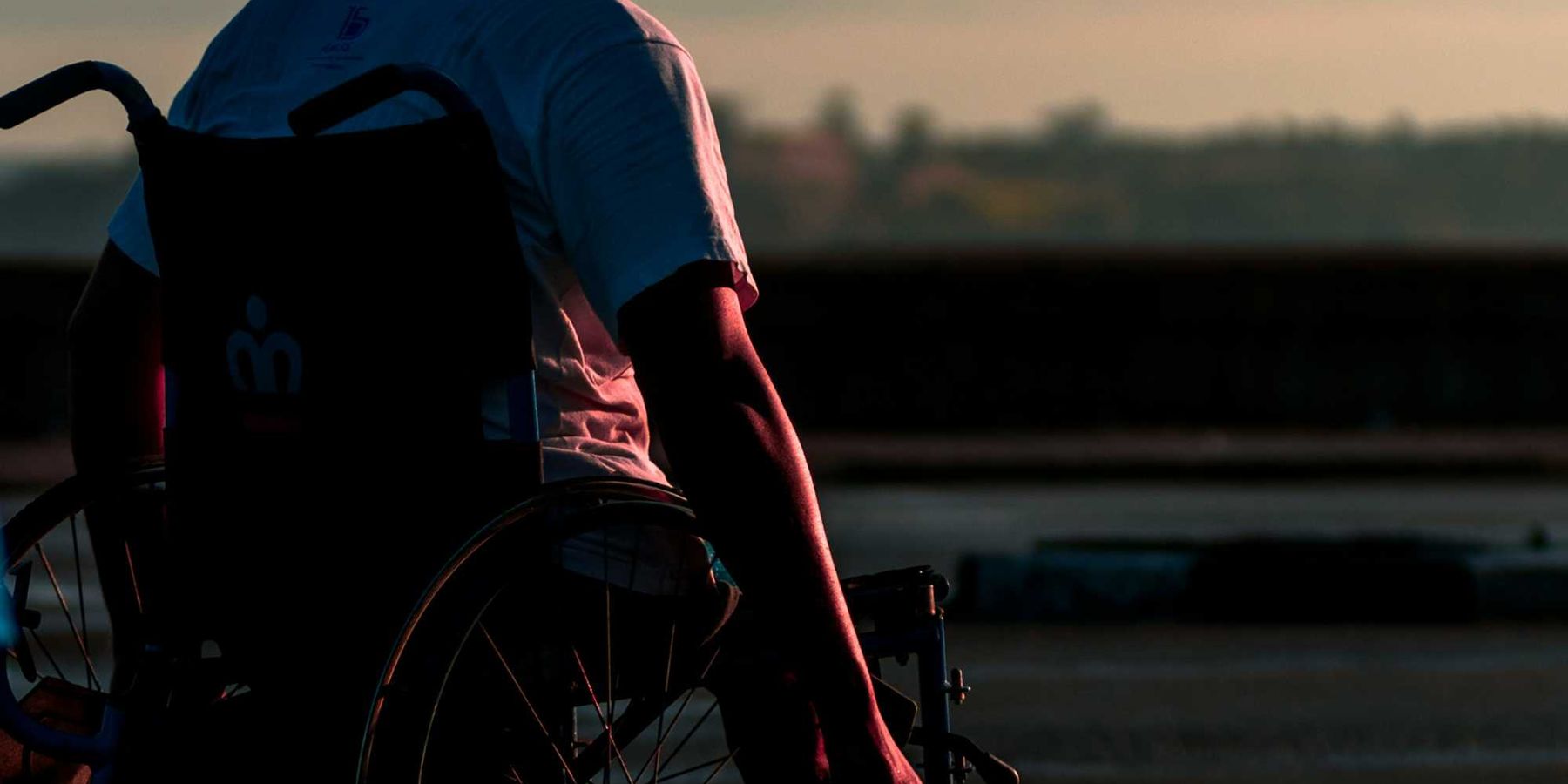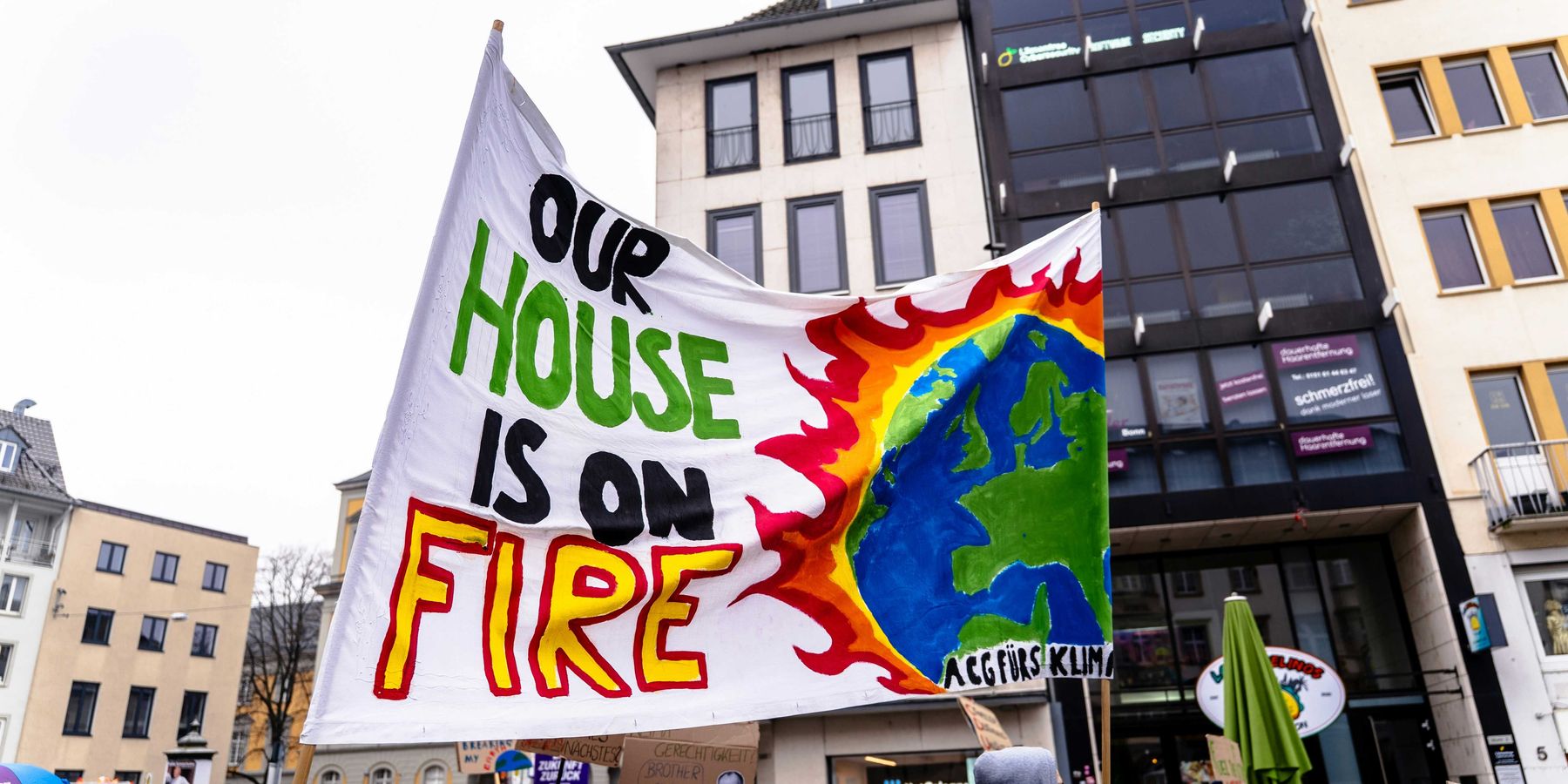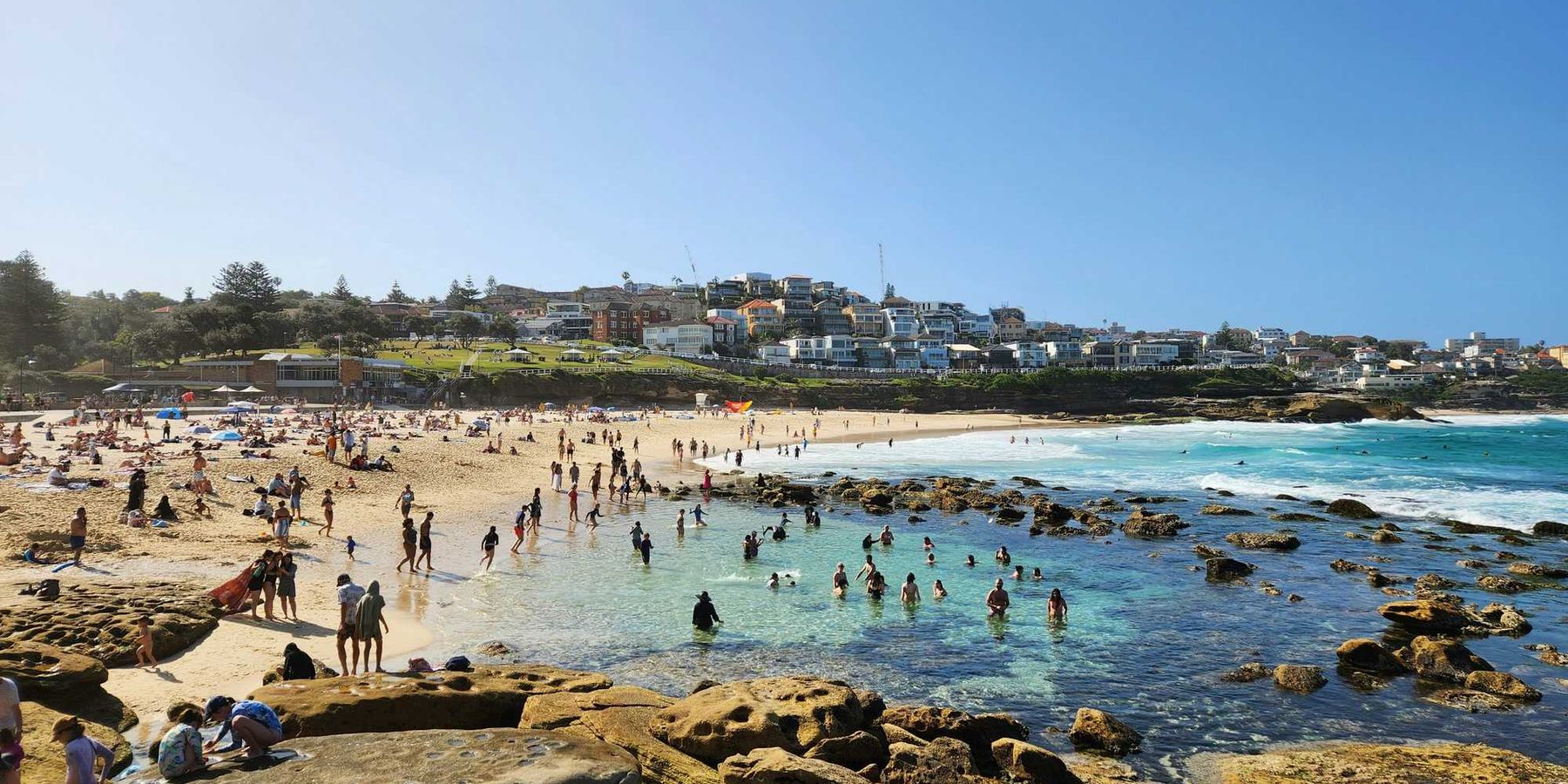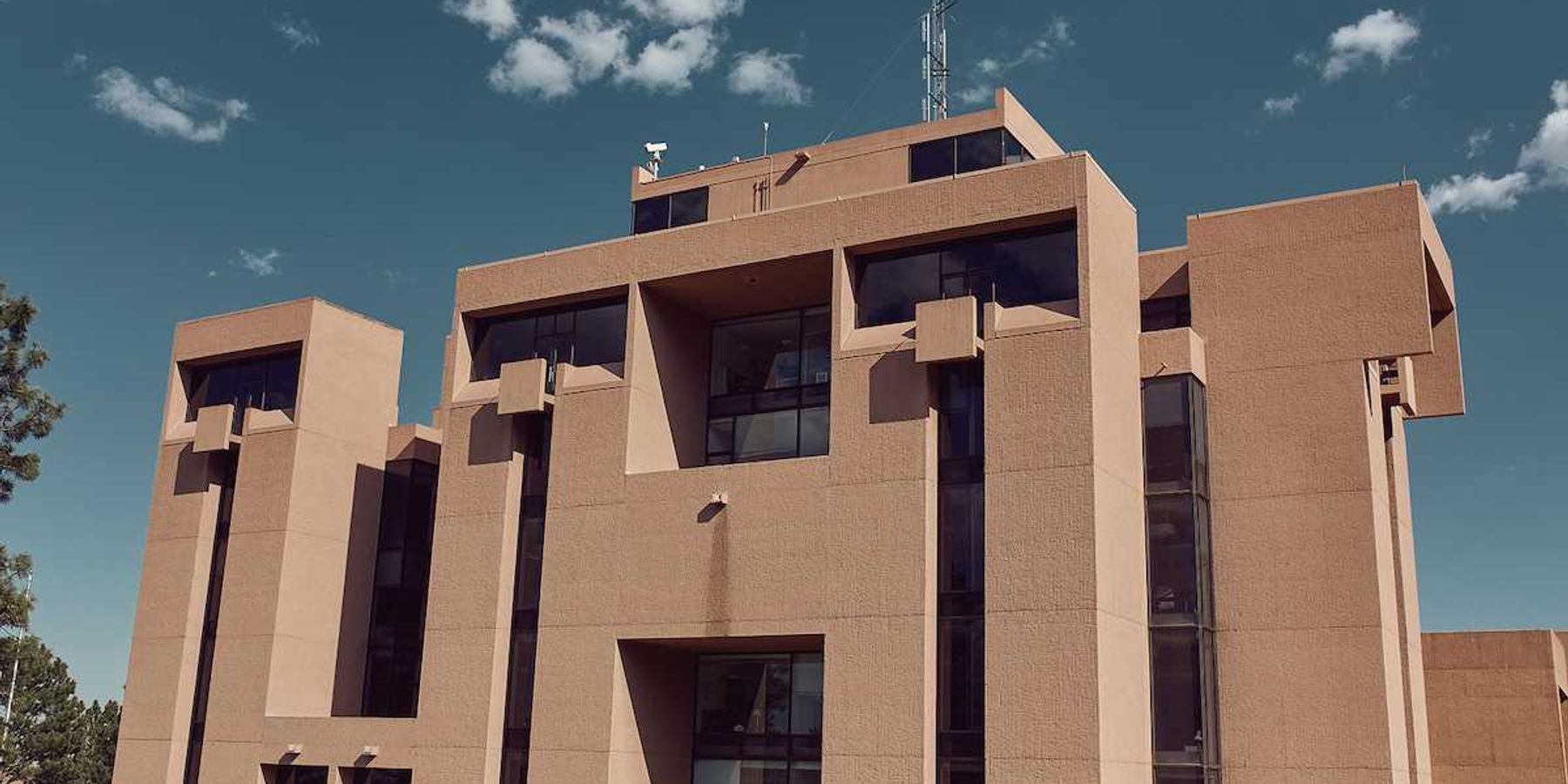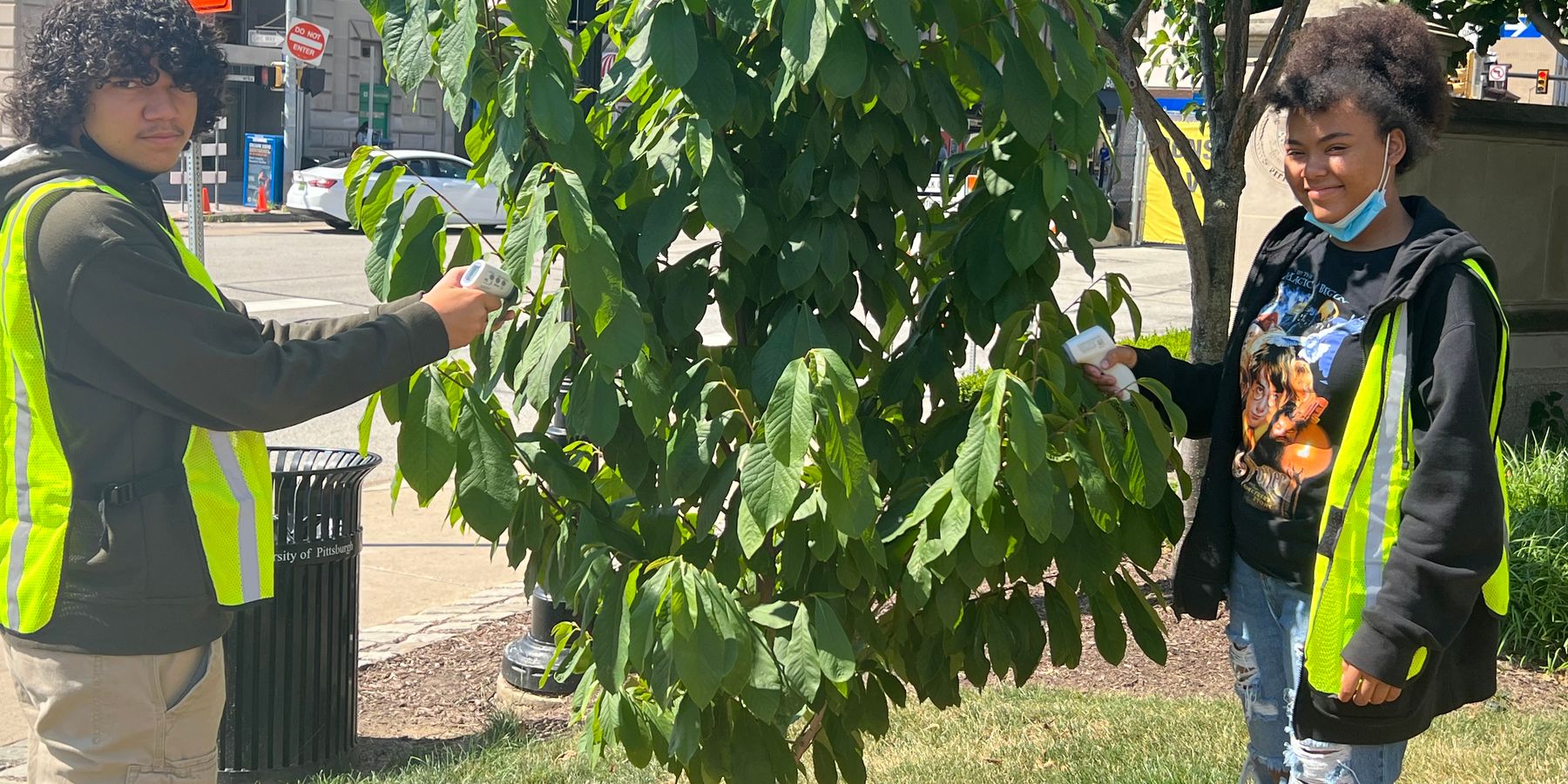
How youth can battle extreme heat in their communities
EHN spoke with heat equity experts about how young people can work toward protecting the most vulnerable from extreme heat and advancing climate justice.
Editor’s note: This reporting project was conducted through the University of Pittsburgh Public Health Science Academy by Aaliyah Campbell and Darius Symms, high school students at the Pittsburgh Science and Technology Academy, and their mentor, freelance reporter Sam Totoni.
Last summer was the third-hottest on record in the U.S. From 2008 to 2017, there were an average of 1,373 extra deaths each year due to an increase in hot summer days that felt at least 90 degrees Fahrenheit.
“Heat is the number one weather and climate-related killer,” Sara Meerow, associate professor at Arizona State University’s School of Geographical Sciences and Urban Planning and coauthor of a 2022 report by the American Planning Association, told Environmental Health News (EHN).
Extreme heat can impact many groups of people, including those who are 65 and older, very young, pregnant, taking certain medications and those living with chronic medical and physical conditions. Extreme heat increases the risk of heart attacks and heart failure and makes asthma worse. People with diabetes are susceptible to heat exhaustion and heat stroke. Pregnancy is riskier in the heat, with increased chances of going into labor early, stillbirth and low birthweight. People experiencing homelessness are about 200 times more likely to die from heat-associated causes than sheltered people.
As summer 2023 ramps up, even northern cities should be prepared. Some of the deadliest heat waves have occurred in northern cities where many buildings lack air conditioning, as exemplified by the 2021 “heat dome” that killed approximately 800 people in Oregon, Washington and British Columbia. “The effects of that heat wave were compounded by the fact that many housing units in that part of the country are not equipped with air conditioning precisely because it was not seen as necessary in the past,” Bev Wilson, associate professor of Urban and Environmental Planning at the University of Virginia School of Architecture, told EHN.
Human-caused climate change will keep increasing the frequency and severity of future extreme heat events, meaning today’s youth will experience more extreme heat than their parents or grandparents. But young people are more than victims of the climate crisis — they are often on the frontlines demanding progress and increasingly involved in decision-making.
EHN spoke with heat equity experts about how young people across the country can advocate for their communities. Using resources including a Heat Vulnerability Index developed by the Yale Center on Climate Change and Health, the United Nations Children’s Fund (UNICEF) Youth Advocacy Toolkit and a 2022 Urban Institute Report, young people can work toward protecting the most vulnerable from extreme heat and advancing climate justice.
Environmental injustice and heat waves
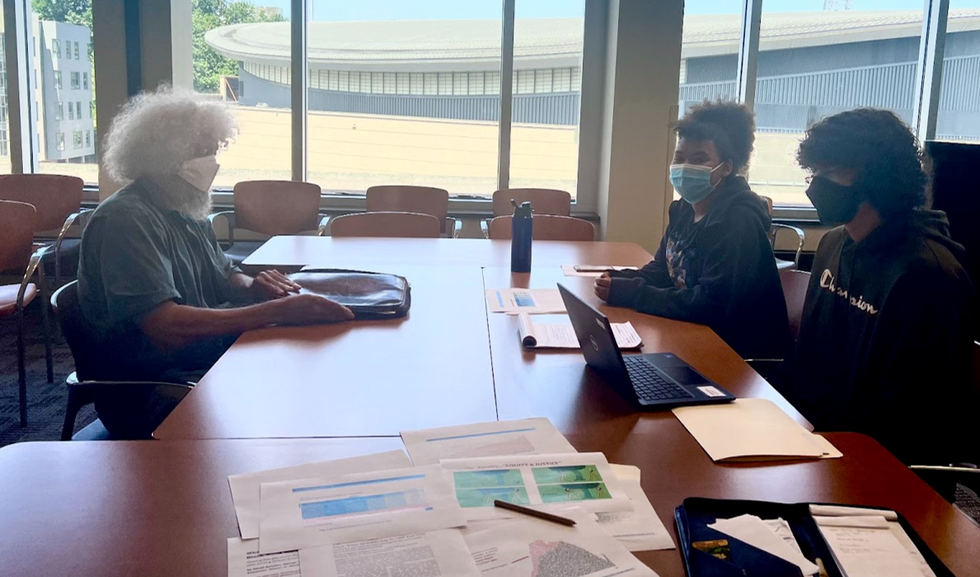
Darius Symms (R) and Aaliyah Campbell (Center) interview Noble Maseru (L), at the University of Pittsburgh.
Credit: Sam Totoni
Heat does not impact every community equally and has the potential to widen health disparities. Formerly redlined neighborhoods in the U.S. ⸺ deemed by federal officials as too risky for investment because residents were Black ⸺ are typically hotter than non-redlined neighborhoods due to fewer trees and a lot of hot pavement. Formerly redlined neighborhoods are also associated with health disparities that can be worsened by extreme heat, including asthma and adverse pregnancy outcomes.
Noble Maseru, director of social justice, racial equity and faculty engagement in the Health Sciences at the University of Pittsburgh, told EHN that he challenges young people to cultivate a commitment to justice. Maseru said this requires understanding the importance of allocating benefits and resources in society in a just manner. "We determine what is just in terms of life, health, and well-being.”
Explore heat equity with a heat vulnerability index
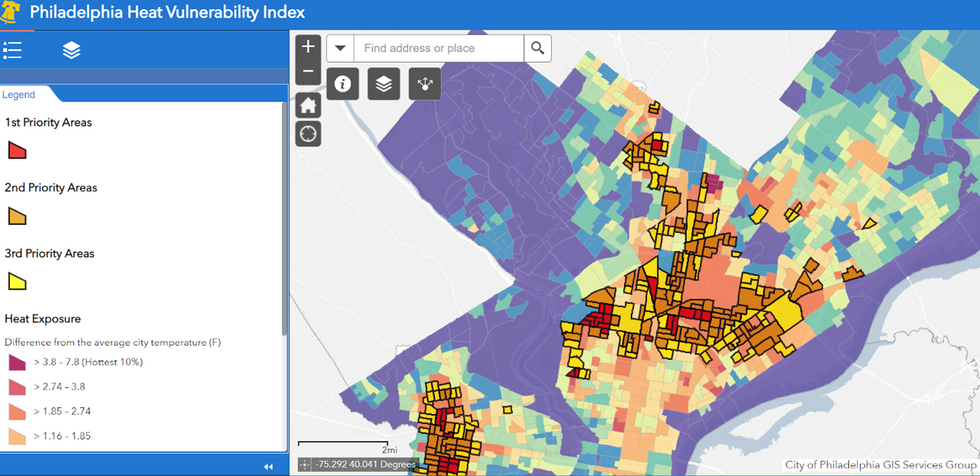
Philadelphia Heat Vulnerability Index. Neighborhoods shaded red are the highest priority for extreme heat relief.
Photo shared with permission of Philadelphia Department of Public Health
Where can someone start who wants to examine heat vulnerability in their community? A heat vulnerability map, also called a heat vulnerability index (HVI), shows neighborhoods whose residents are more at risk during and immediately following extreme heat. The maps take several factors into account including temperature, air conditioning, green space, poverty and race.
Unlike most northern cities, Philadelphia and New York City have HVIs.Philadelphia’s heat vulnerability index “allows us to make sure that limited resources and outreach make it into those census tracts that are at the highest risk,” James Garrow, communications director for the Philadelphia Department of Public Health, told EHN. Garrow said it helps guide decisions such as the location of cooling centers available during heat health emergencies and reveals where to conduct outreach to raise awareness about heat-related illness. This customized response is at the heart of a heat equity program.
If your community does not have its own HVI, the Yale Center on Climate Change and Health recently published one of the contiguous U.S. “Students can find the HVI scores in their cities and other information on race/ethnicity and redlining grades,” Kai Chen, director of research at the Yale Center on Climate Change and Health, told EHN.Resources and steps for advancing heat equity

Melanie Meade lives in Clairton, 15 miles southeast of Pittsburgh in Allegheny County and home to one of the county’s largest polluters, the Clairton Coke Works.
Credit: Melanie Meade
In addition to the Yale HVI, the UNICEF Youth Advocacy Toolkit and the 2022 Urban Institute Report Centering Equity to Address Extreme Heat are useful resources. Here are some steps you can take to turn these resources into action.
- Find out where your community is most vulnerable
The first step is to understand your local heat vulnerability. Use your local HVI or the Yale HVI and familiarize yourself with how the HVI defines vulnerability.
It is important to understand the experiences of vulnerable community members. For example, Melanie Meade lives in Clairton, 15 miles southeast of Pittsburgh in Allegheny County and home to one of the county’s largest polluters, the Clairton Coke Works. “Our community’s children definitely experience increased asthma incidents during heat,” Meade told EHN. “And especially those who are playing sports and practicing outdoors.”
- Evaluate your community’s preparedness
Determine whether your community needs to increase access to cool spaces in vulnerable areas. Cool spaces are not limited to buildings. Philadelphia’s HVI, for example, has highlighted where the city should park cooling buses so people most vulnerable to heat reach safety with minimal exposure.
When EHN compared the locations of cooling centers in Pittsburgh to the Yale HVI, we found some of the most vulnerable neighborhoods do not have cooling centers. Locations of the five cooling centers in Pittsburgh, open when temperatures reach 90 degrees Fahrenheit, are determined by the city’s Department of Parks and Recreation, which did not respond to requests for comment.
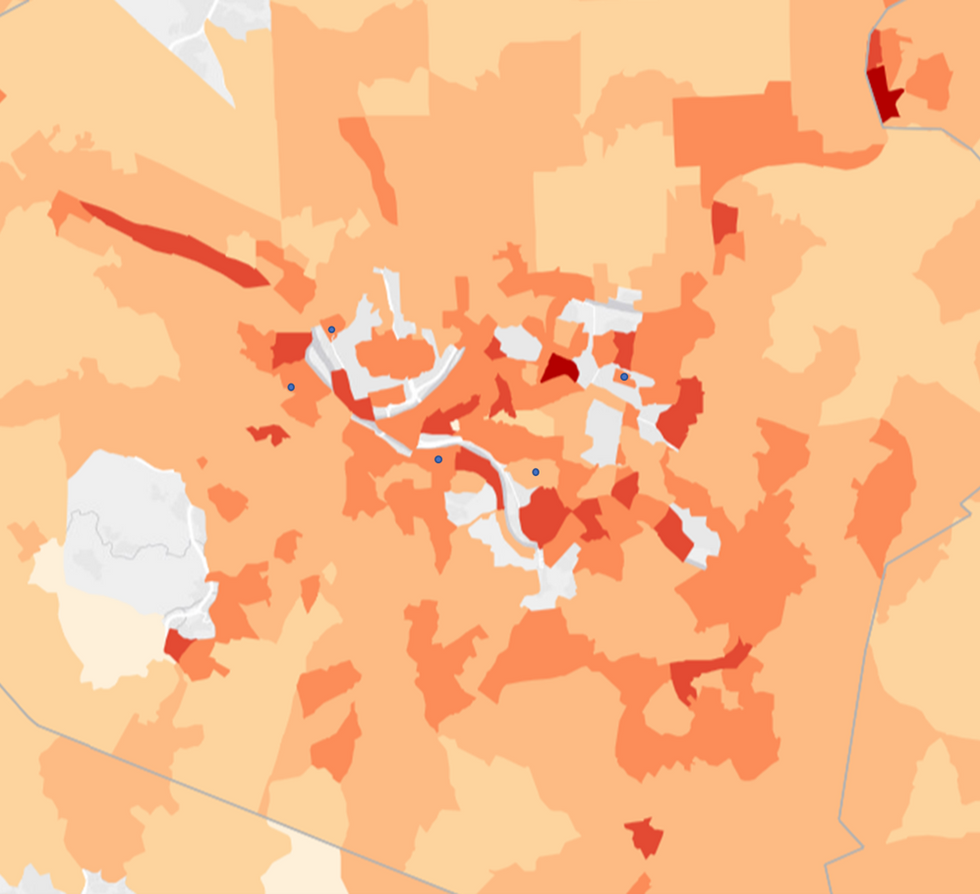
Heat Vulnerability Index for Pittsburgh, PA according to the Yale Center on Climate Change and Health. Darker shades of red indicate neighborhoods with greater vulnerability to extreme heat. Blue dots indicate locations of cooling centers in Pittsburgh.
Image of HVI shared with permission of Kai Chen
- Explore possibilities for a public education campaign
Heat may be a killer, but it is a silent killer, meaning it can be difficult to attribute a specific health challenge to heat. Coauthor of the Urban Institute report, Jorge Morales-Burnett, told EHN, “Communities may not recognize that a lot of their health outcomes are connected to heat. That can also be a role for advocates providing that information to communities.”
- Find out whether warning systems could be improved
If your city does not have a heat wave early warning system, the development of one can protect people by communicating risks and suggested protective actions in a heat wave. One example is Baltimore’s Code Red Extreme Heat.
More ways to take action
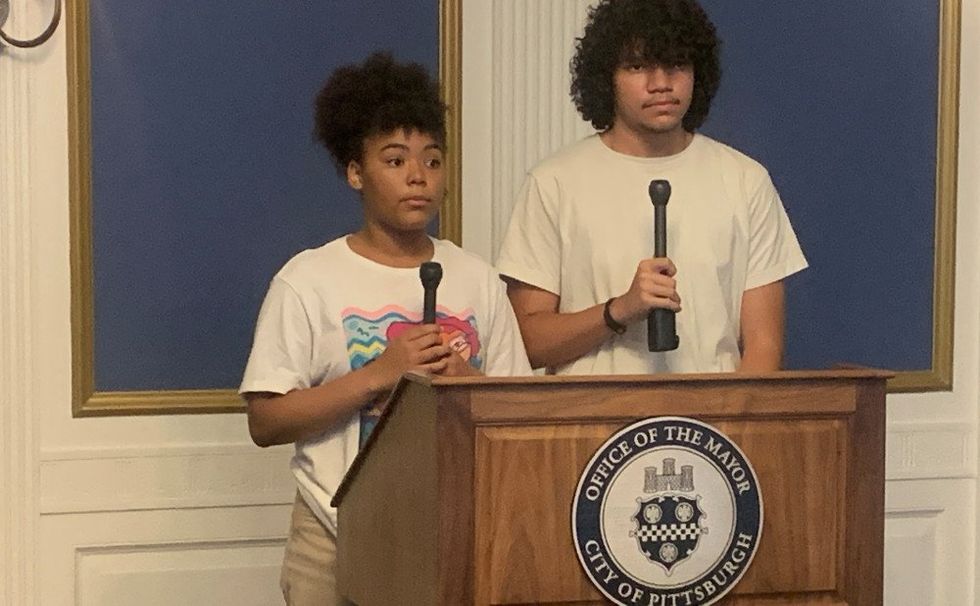
Authors Aaliyah Campbell (L) and Darius Symms (R) speak about the need to improve heat equity at Pittsburgh Mayor Ed Gainey's office during summer 2022.
Credit: Toni Deslouches
Cities can do more to design housing and neighborhoods in ways that will reduce impacts of extreme heat. An example is adding solar panels to buildings such as cooling centers to increase air conditioning capacity without increasing greenhouse gas emissions.
- Engage in citizen science
Rebecca Marx, coauthor of the Urban Institute report, highlighted some model citizen science programs. The Beat the Heat program in Indiana worked with student athletes who were outdoors a lot and subject to heat stress. The City of Boston has a website that asks community members to map where they live and share stories about how heat has affected them. “Getting those stories in the hands of the people who are making decisions is another good starting point,” Marx told EHN.
- Follow the money
Marx said that although a community typically has funding that could be used for heat, it’s not usually labeled as such. It’s often up to the communities and community advocates to say that’s what they want the resources to go toward. She pointed to the 2021 Bipartisan Infrastructure Deal and the 2022 Inflation Reduction Act as examples of funding sources. “Looking at some of those newer funding bills and the programs coming out of them would be a good exercise for students and allow them to help point their local government to resources.”
- Taking your advocacy to public meetings
The American Public Health Association suggests participating in public meetings to boost advocacy efforts and provides the following tips:
- Understand the purpose and tone of the event.
- Be prepared with accurate, timely, and relevant information.
- Use your network to increase attendance.
- Keep your presentation brief.
- Practice!
- Leave written copies of your position or statement with the policymaker, their staff, press and the public attending the meeting.
